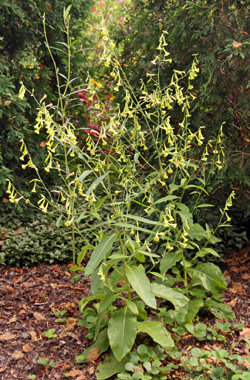
Tobacco is a large group of plants in the nightshade family (Solanaceae). A few of the nearly 60 species of Nicotiana are quite attractive and have been used as garden ornamentals for a long time. Nicotiana langsdorffii is an interesting plant from mild parts of Chile and Brazil with no common name. Although it can be a weak perennial in mild climates (zones 10-11), it is generally grown as an annual. All parts of the plant are poisonous if ingested in large quantities.
Like most nicotianas, this species has broad, deep-green leaves with a sticky surface. The basal leaves can grow up to 10-12 inches long. The variety ‘Variegata’ has splashes of cream on the foliage. Plants can get up to 5 feet tall and two feet wide, but generally are much shorter and narrower, generally reaching 3 feet in most gardens.
In summer the plant produces a central flower stem from the rosette of leaves. Each tubular flower has a flared, five-pointed, star-shaped end. These 2-inch long trumpet-shaped blooms are an apple green or chartreuse color. The numerous pendant flowers, with striking blue anthers, droop from thin flower stems at all angles. In their native habitat they are pollinated by hummingbirds, so are scentless (unlike many other hawkmoth-pollinated species which are very fragrant). Rounded capsules filled with tiny black seeds follow the flowers. This species self-seeds readily, but generally does not become invasive.
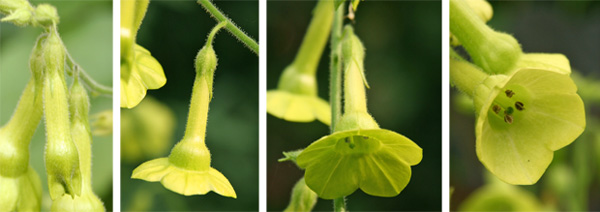
This green-flowered plant makes a subtle statement in the garden. It looks best in small groups of three or as individuals sprinkled in among other plants for a cottage garden look. Its green flowers contrast well with dark-foliage plants; try mixing it with red or purple-leaved varieties of coleus or purple basil (such as ‘Dark Opal’, ‘Purple Ruffles’, ‘Red Rubin’ or ‘Red Osman’).
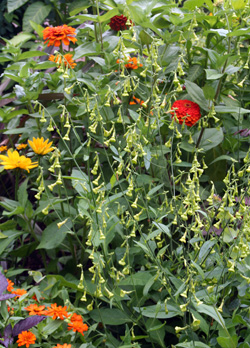
The broad leaves contrast well with grasses and is particularly nice with purple fountain grass (Pennisetum setaceum). The green flowers work well to moderate other colors, blending with everything from subtle to bright colors. A single plant placed between clashing colors, such as a warm pink and a cool orange, serves as a buffer to blending them together in a harmonious way. It can be used to fill holes left by spring-blooming bulbs or other summer dormant plants.
Grow N. langsdorffii in full sun to partial shade in rich, moist, well-drained soil. It is easily grown from seed in the garden, but plants started indoors 6-10 weeks before the last frost date will bloom earlier. Deadhead to promote additional flowering. This plant has few pests, although can be infested by aphids and is susceptible to infection by tobacco mosaic virus.
– Susan Mahr, University of Wisconsin – Madison
Download Article





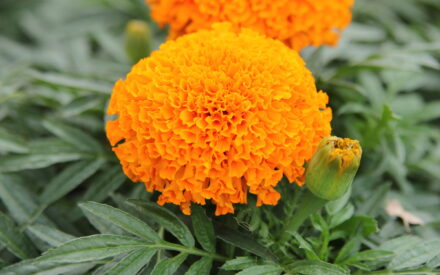 Marigolds
Marigolds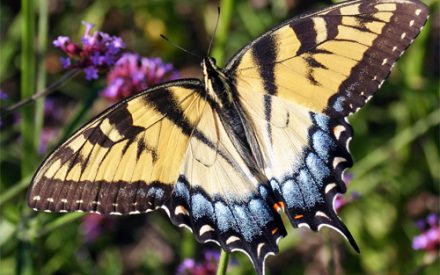 Create a Butterfly Garden
Create a Butterfly Garden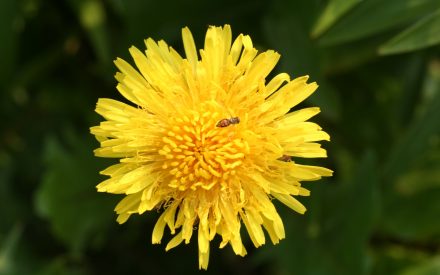 Plant Flowers to Encourage Beneficial Insects
Plant Flowers to Encourage Beneficial Insects Forcing Bulbs
Forcing Bulbs


